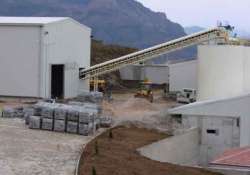'Madhya Pradesh copper mine threatens local communities'
Malajkhand (Madhya Pradesh): What is said to be Asia's largest copper mine in the central Indian state of Madhya Pradesh has become a threat for the tribals and the indigenous communities living in the area,

Malajkhand (Madhya Pradesh): What is said to be Asia's largest copper mine in the central Indian state of Madhya Pradesh has become a threat for the tribals and the indigenous communities living in the area, environmentalists charge.
People in the Malajkhand area of the Balaghat district, some 370 km from state capital Bhopal, are suffering from the loss of farmland and the degradation brought about by the mining activities, environmentalists say.
Now, the state-owned Hindustan Copper Limited (HCL) plans to more than double its production from two million tonnes per annum (MTPA) to five MTPA after it receives the necessary clearances from the Ministry of Environment and Forests.
Environmentalists fear this will accelerate the destruction of forests and lead to further contamination of the surrounding environment.
The Malajkhand area, 20 km from the Kanha National Park, contains 70 percent of India's copper reserves and accounts for 80 percent of HCL's production.
The Centre of Environmental Science and Engineering at the Bhilai Institute of Technology had pointed out that the mineral processing plant in the area is causing serious damage to the environment and harming the health of both humans and animals.
Scientists at the Centre pointed out that the wastewater leaking through the plant's tailings dam contains large quantities of harmful heavy metals like nickel, zinc and lead which seeps into the soil.
The tailings dam is meant to retain the water-sodden, fine-grained material or tailings that represent the waste product from a mineral-processing plant.
Silkan Merawi, 45, resides in Chhinditola village, a little distance from the plant. She is worried on account of scars all over her body and also suffers from chronic stomach ache.
"We're forced to consume the locally available food and water, which is very harmful to our health. The sand from the mine sticks to our body and makes us sick. We've complained to the authorities, but no one is ready to listen to us," Silkan lamented while speaking to IANS.
The condition of Amarwati, 35, is similar. "The residual waste from the plant has changed our lives. The water that we consume is unsafe as acidic mine waste leaks into water bodies. People drinking this water suffer from various diseases.
People in the Malajkhand area of the Balaghat district, some 370 km from state capital Bhopal, are suffering from the loss of farmland and the degradation brought about by the mining activities, environmentalists say.
Now, the state-owned Hindustan Copper Limited (HCL) plans to more than double its production from two million tonnes per annum (MTPA) to five MTPA after it receives the necessary clearances from the Ministry of Environment and Forests.
Environmentalists fear this will accelerate the destruction of forests and lead to further contamination of the surrounding environment.
The Malajkhand area, 20 km from the Kanha National Park, contains 70 percent of India's copper reserves and accounts for 80 percent of HCL's production.
The Centre of Environmental Science and Engineering at the Bhilai Institute of Technology had pointed out that the mineral processing plant in the area is causing serious damage to the environment and harming the health of both humans and animals.
Scientists at the Centre pointed out that the wastewater leaking through the plant's tailings dam contains large quantities of harmful heavy metals like nickel, zinc and lead which seeps into the soil.
The tailings dam is meant to retain the water-sodden, fine-grained material or tailings that represent the waste product from a mineral-processing plant.
Silkan Merawi, 45, resides in Chhinditola village, a little distance from the plant. She is worried on account of scars all over her body and also suffers from chronic stomach ache.
"We're forced to consume the locally available food and water, which is very harmful to our health. The sand from the mine sticks to our body and makes us sick. We've complained to the authorities, but no one is ready to listen to us," Silkan lamented while speaking to IANS.
The condition of Amarwati, 35, is similar. "The residual waste from the plant has changed our lives. The water that we consume is unsafe as acidic mine waste leaks into water bodies. People drinking this water suffer from various diseases.